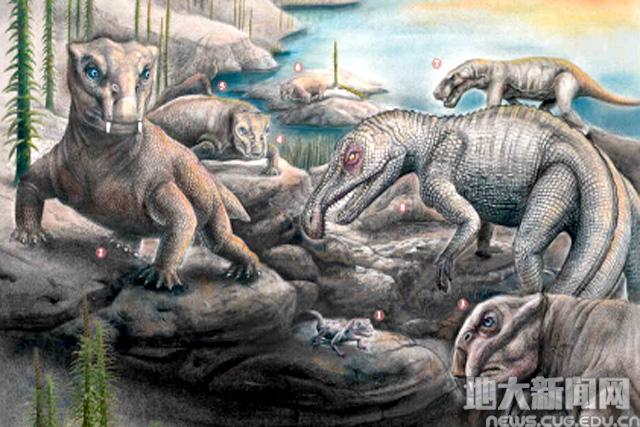
The largest Phanerozoic mass extinction, which is the Permian-Triassic (P-Tr) mass extinction, happened 252 million years ago. How long did it take for the terrestrial ecosystem to rebuild in the post-extinction recovery phase? How did terrestrial biota recover?
CUG team led by Prof. CHEN Zhongqiang in partnership with researchers from the California Academy of Sciences, the University of Bristol, Missouri University of Science and Technology, and the Chinese Academy of Sciences, by using mathematical models for the first time, find out that the recovery of the terrestrial ecosystem after the P-Tr mass extinction lasted over 10 million years and explain how the communities recovered. Their findings are published in The Proceedings of the Royal Society.(https://royalsocietypublishing.org/doi/10.1098/rspb.2021.0148#d235308e1)
There have been many mass extinctions in the history of life, including the well-known Cretaceous-Tertiary mass extinction when dinosaurs went extinct. Their research results show that the P-Tr mass extinction differed from other ones and that it was the most devastating to the terrestrial ecosystem. Only 5% of the species survived.

Many Theropoda members grew bigger and sprouted carapaces for self-protection. But still, they became inevitably extinct.

The P-Tr mass extinction brought fundamental changes to the terrestrial ecosystem, and the Dicynodon surviving the crisis dominated the land.
CUG doctoral student HUANG Yuangeng, the first author of the paper, reconstructed the palaeocommunity by modelling 14 terrestrial and freshwater communities through a long sedimentary succession from the lower Permian to the lower Jurassic in northern Xinjiang, northwest China.
Prof. CHEN said, “It’s exciting. Before this, we could describe the palaeocommunity, but it was hard to assess its stability. The geological sections and fossil records in northwest China together with the computing technology enable us to push the research of palaeocommunity further. And the results may enlighten us about future management of our ecosystem.”
(from https://en.cug.edu.cn/info/1228/2601.htm)